These Chicken Kotleti are the ultimate Eastern European comfort food—light, juicy, and full of flavor. They are a hit with both kids and adults.
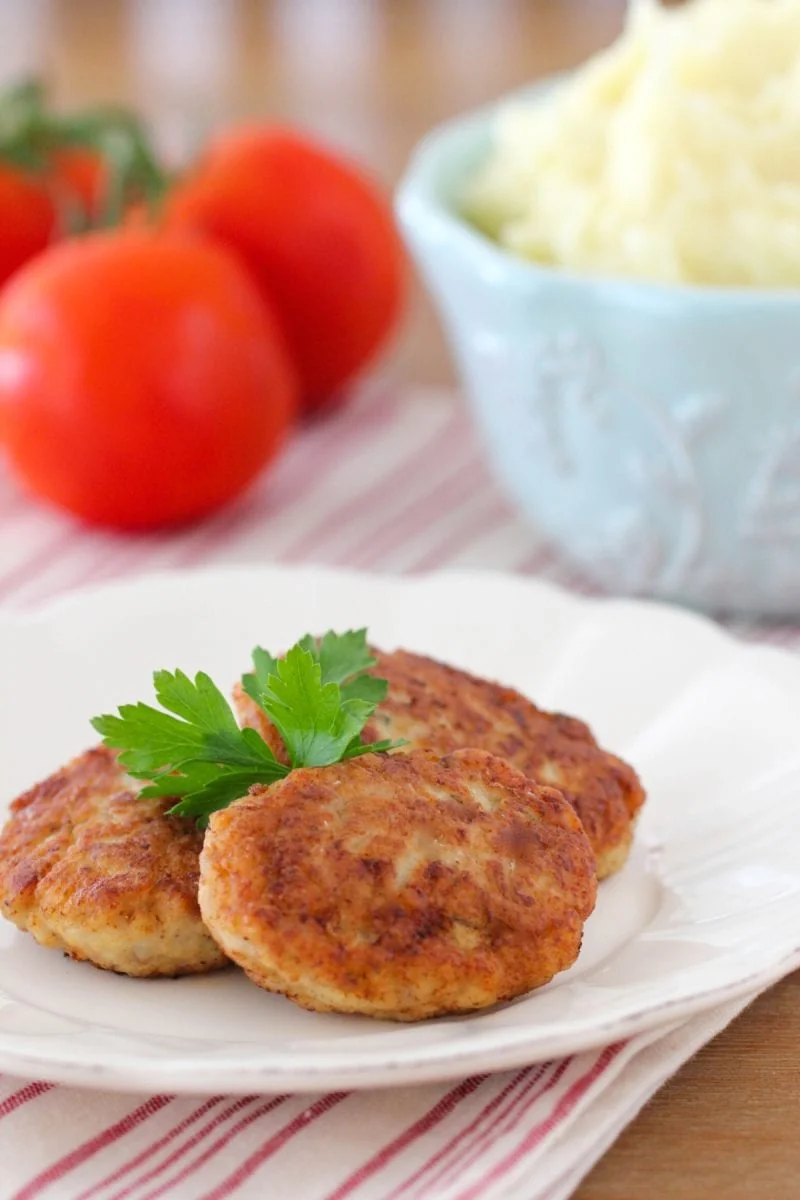
Chicken Kotleti aren’t just a favorite—they’re a foundational dish in many Eastern European homes, especially across the Soviet countries like Belarus, Ukraine, and Russia. I would go out on a limb to say that all Slavic children grew up eating kotleti, just like Italians grow up with meatballs.
I absolutely love this simple, classic recipe—it’s perfect for busy family weeknight dinners, but it also works wonderfully when serving guests. The flavor is always a hit, and they’re so easy to make that I can prepare them any time, whether for a casual meal or something a little more special.
Jump to:
What are Kotleti?
Kotleti, which translates to "cutlets" in Russian, are small, individual meatball-type patties that popular in Slavic cuisines. Instead of round in shape, like most other meatballs, kotleti have a long oval shape.
Traditionally made with beef or pork, this version uses ground chicken for a lighter, more tender texture. I personally think chicken kotleti are so much more delicious, and definitely more tender and juicy. The patties are typically pan-fried until golden and crispy on the outside while remaining juicy and soft inside, making them the perfect balance of flavor and texture.
Why You'll Love This Recipe
Juicy & Flavorful: Ground chicken makes these Kotleti extra tender and juicy, bursting with flavor in every bite. You've got to try Chicken and Mushroom Patties, chicken kotleti bursting with a delicious mushroom filling.
A Hit with Kids & Adults: These patties are loved by the whole family, making them perfect for everyone from picky eaters to adults.
Make Ahead & Freezable: Perfect for meal prep! You can prepare them in advance and then reheat or even freeze them.
Ingredients
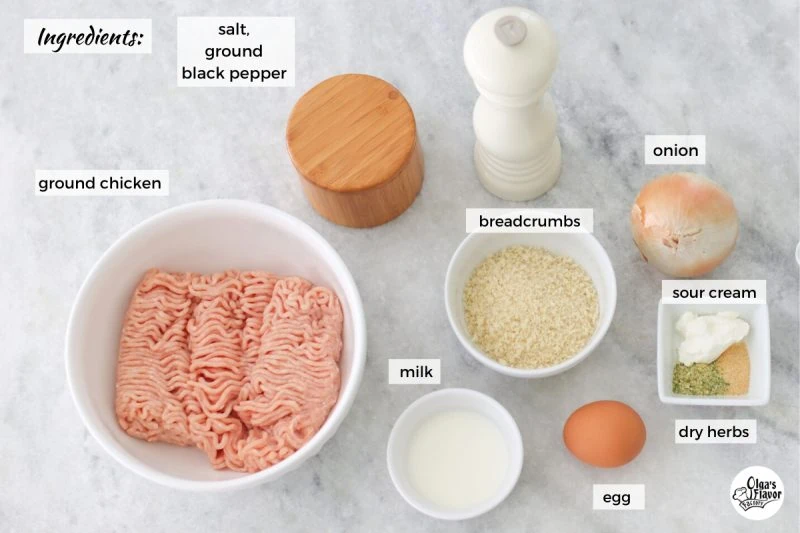
- Ground Chicken: The star of this dish! Ground chicken gives the kotleti their light, tender texture, making them extra juicy and flavorful compared to traditional beef or pork cutlets.
- Panko Breadcrumbs: While I used to toast sliced bread, soak it in milk, and pulse it in the food processor (really delicious!), panko breadcrumbs make the process so much easier. They create a porous texture that helps keep the kotleti juicy and tender.ground chicken.
- Sour Cream: In addition to the milk, sour cream adds a richness and creaminess that takes the kotleti to the next level. It brings a subtle tang that complements the meat perfectly.
- Onion: Onions do more than just flavor these kotleti—they add an extra level of juiciness. Grated finely, they blend into the meat mixture, infusing every bite with savory goodness without being overpowering.
- The complete list of ingredients and their exact measurements can be found in the recipe card below.
How to Make Chicken Kotleti
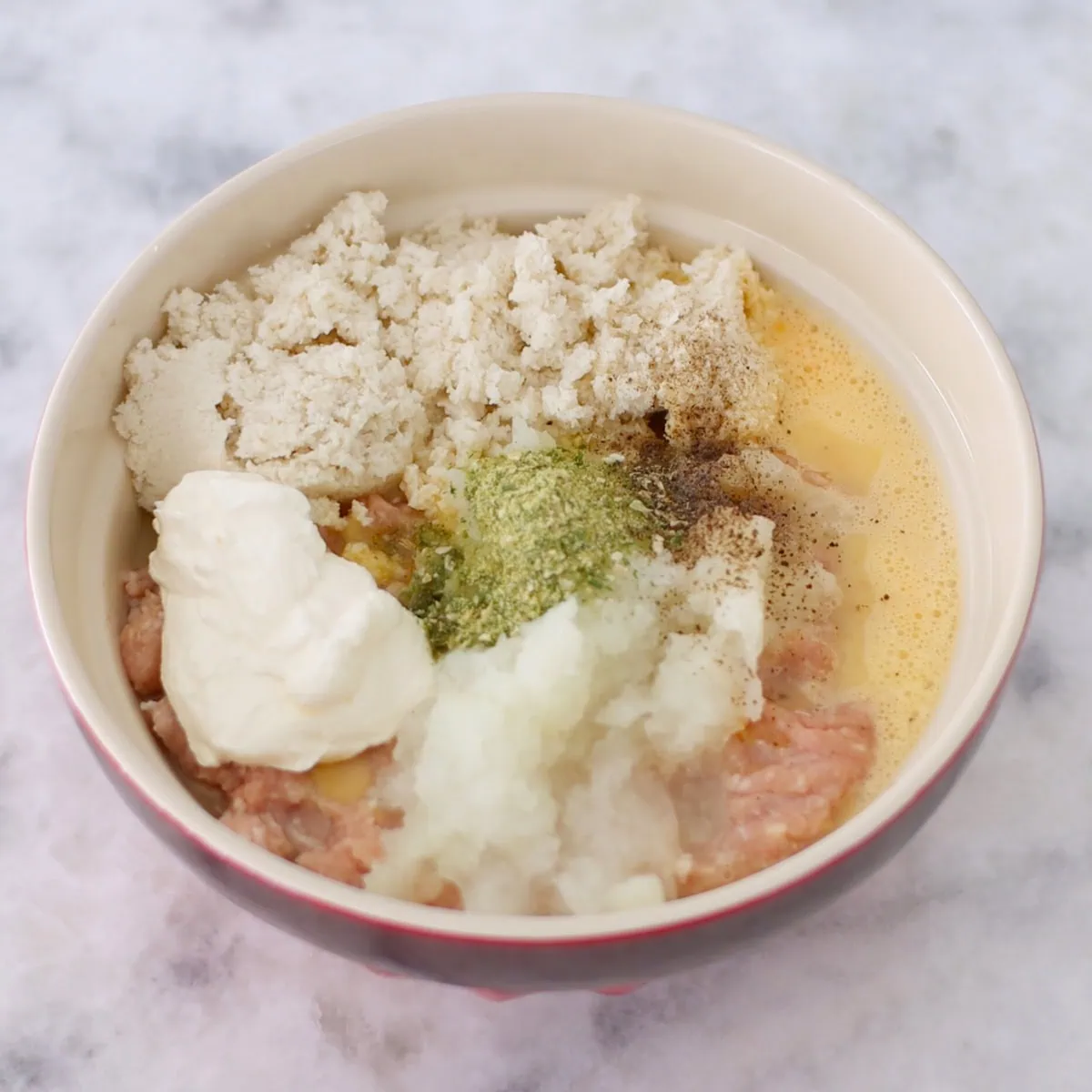
- First, make the ground chicken mixture: Soak the bread or breadcrumbs in milk, and while that’s soaking, grate the onion. Place the ground chicken in a large bowl, then add the soaked breadcrumbs, sour cream, egg, grated onion, salt, pepper, and your dry herbs and spices. Mix everything together until well combined.
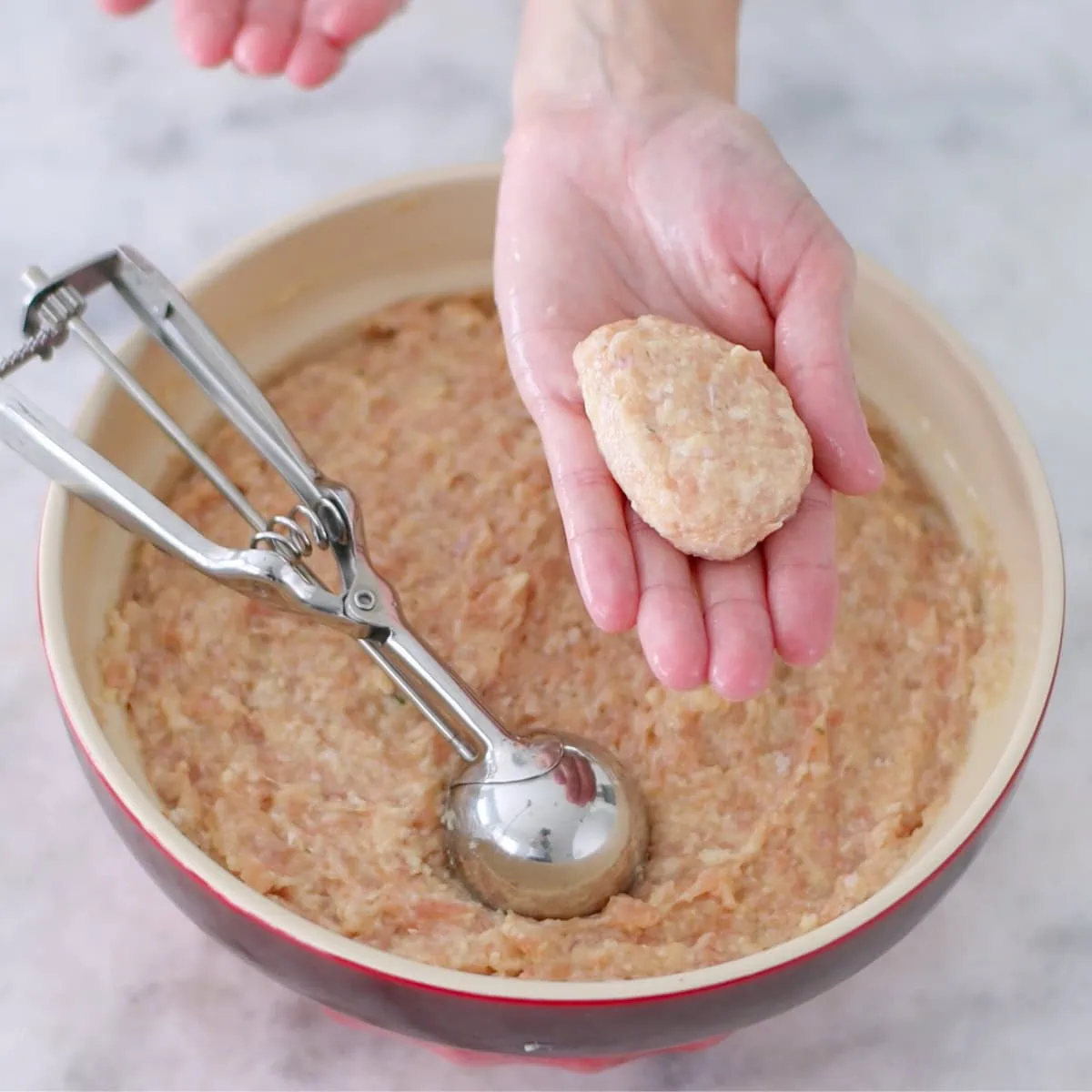
- Shape the patties: Using dampened hands, shape the chicken mixture into oval patties. This helps prevent the mixture from sticking to your hands. Aim for about 2.5 inches in length for each patty—small enough to cook through easily
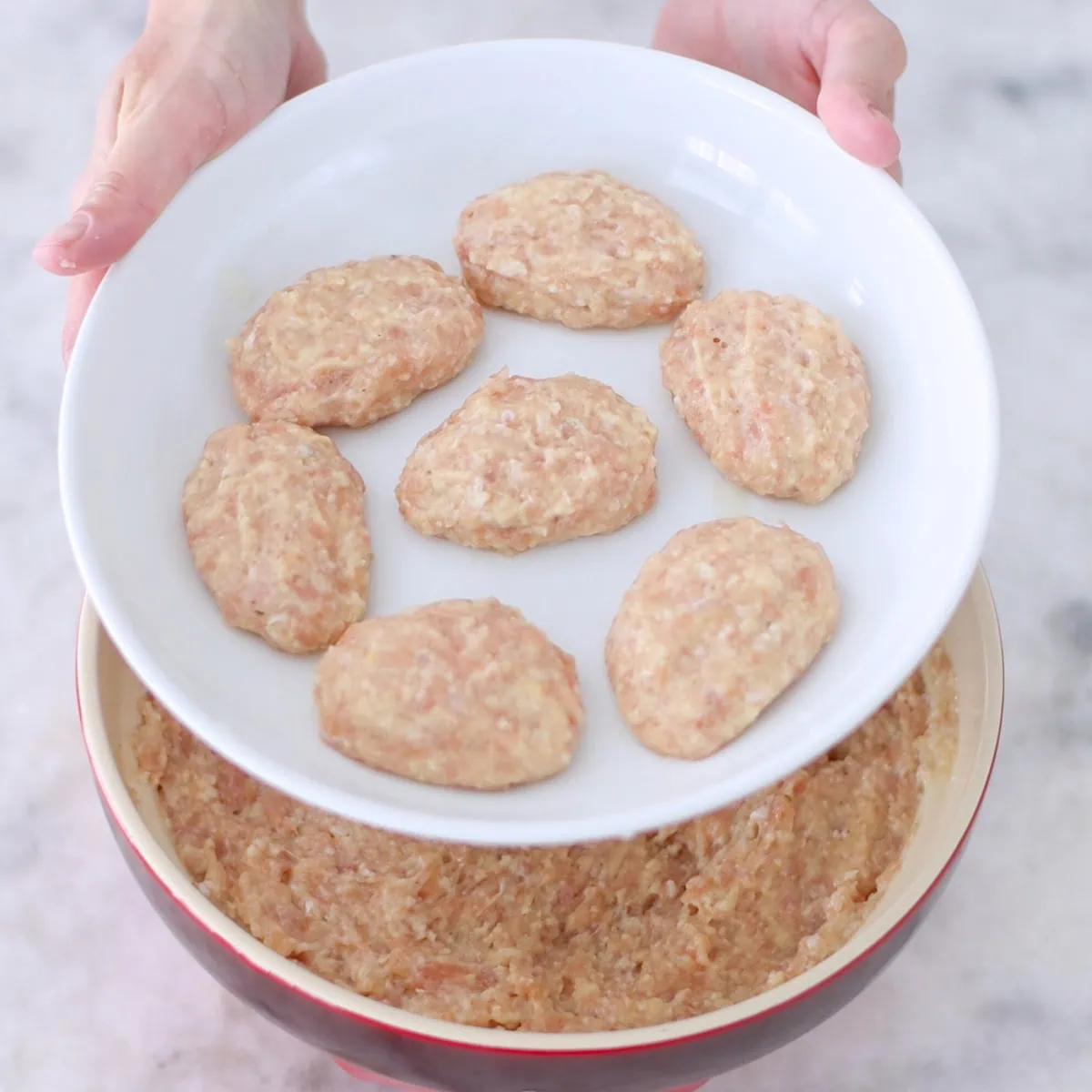
- Work in Small Batches for Best Results: Shape only a few kotleti at a time—don’t try to prep all of them at once. This mixture is super soft and harder to work with, so it’s best to work with one pan full at a time, then assemble more as needed.
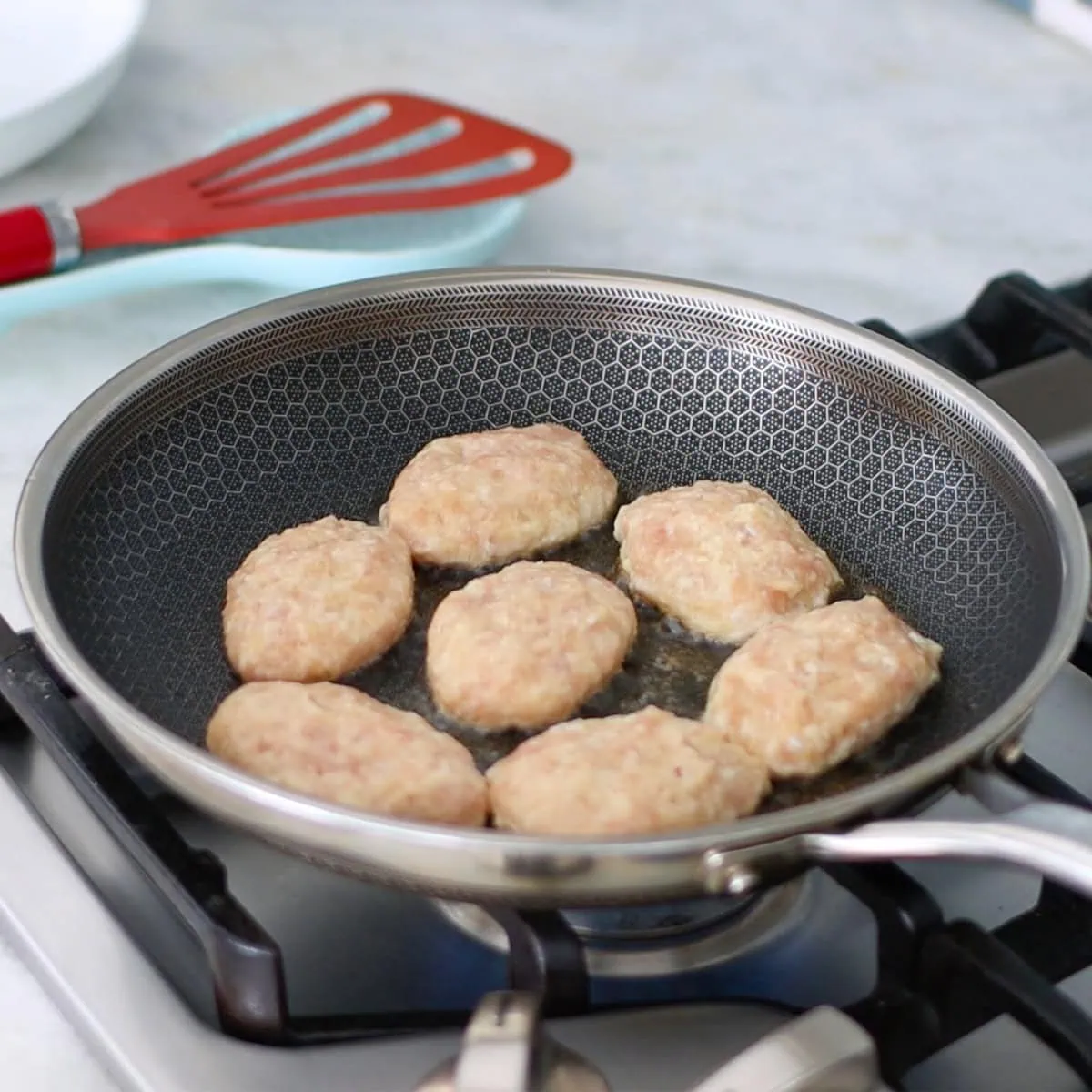
- Pan-fry the kotleti: Heat some oil in a skillet over medium heat. Once the oil is hot, carefully place the patties in the skillet. Cover the pan to help steam the kotleti and keep them juicy. Cook the first side for about 5 minutes, or until golden brown, then flip and cook the second side for another 3 minutes.
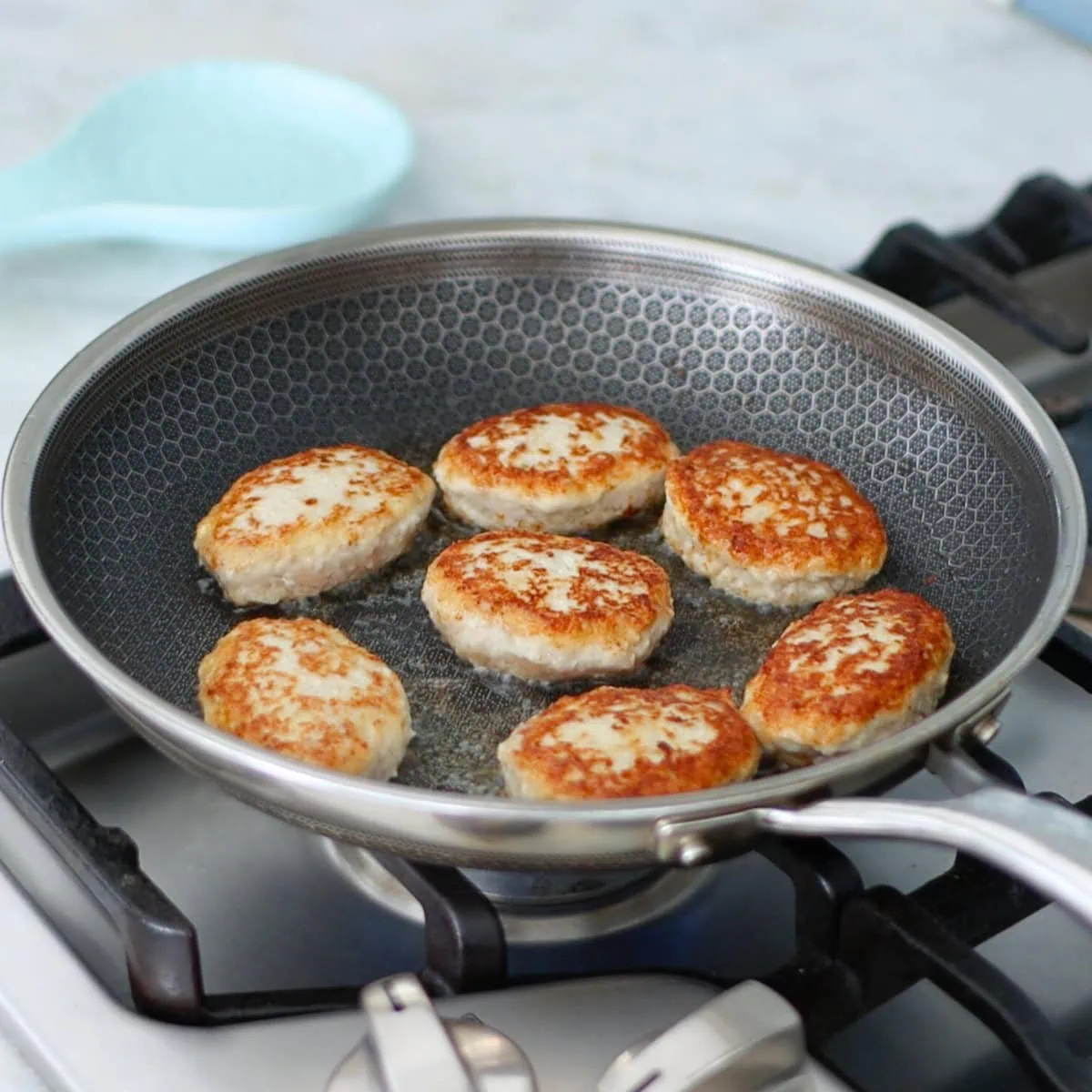
- Repeat the process: Once the first batch is done, wipe out the skillet with a paper towel and add a little more oil before cooking the next batch of kotleti.
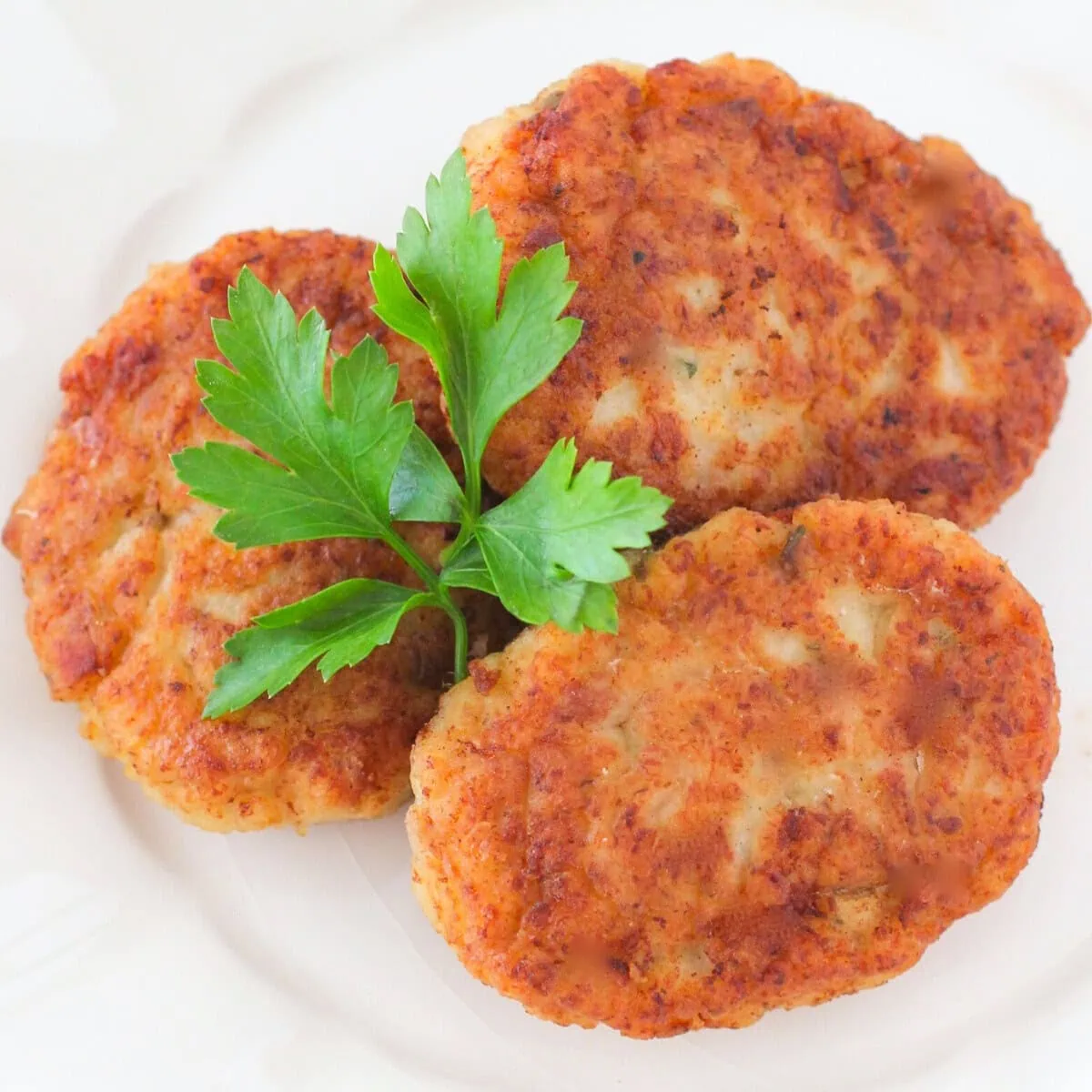
- Serve and enjoy: Serve the chicken kotleti hot, straight from the skillet or store leftovers in the refrigerator for 3-5 days.
Helpful Tips
The Ground Meat Mixture Should Be Tender: The chicken mixture will be very tender, much softer than a typical meatball mixture, so don’t worry if it feels looser than usual. This is exactly how it should be for the juiciest, most tender kotleti. If it's unworkable, add more breadcrumbs. These Cheesy Chicken Meatballs are also so juicy and have a similar method.
Use a Portion Scoop for Consistency: Using a portion scoop is a great way to keep kotleti the same size. This helps them cook through at the same time, making for a more uniform result.
Cook in Batches or Multiple Pans: It’s best to cook the kotleti in batches, or you can even use multiple pans if you’re making a large batch. This way, each patty gets enough space to cook properly.
And don’t forget—clean the skillet after each batch! Wipe out any brown bits left behind, and add a little more oil. Those leftover bits can burn and discolor the next batch, preventing your kotleti from getting that beautiful, even golden-brown color.
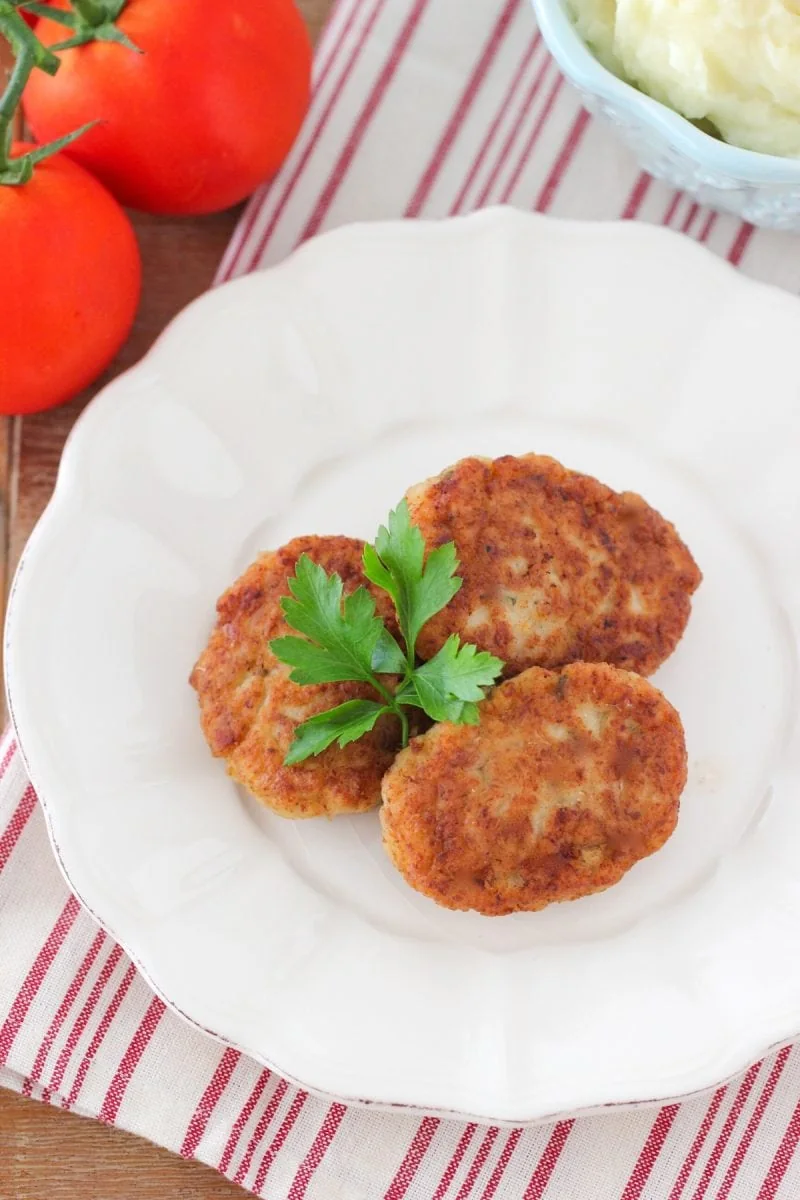
Make Ahead
Chicken Kotleti are perfect for making ahead, and I always make extra batches when I’m putting in the effort to cook them. That way, we can enjoy them more than once! Plus, they freeze beautifully, so I often stock my freezer with them for freezer meal prep.
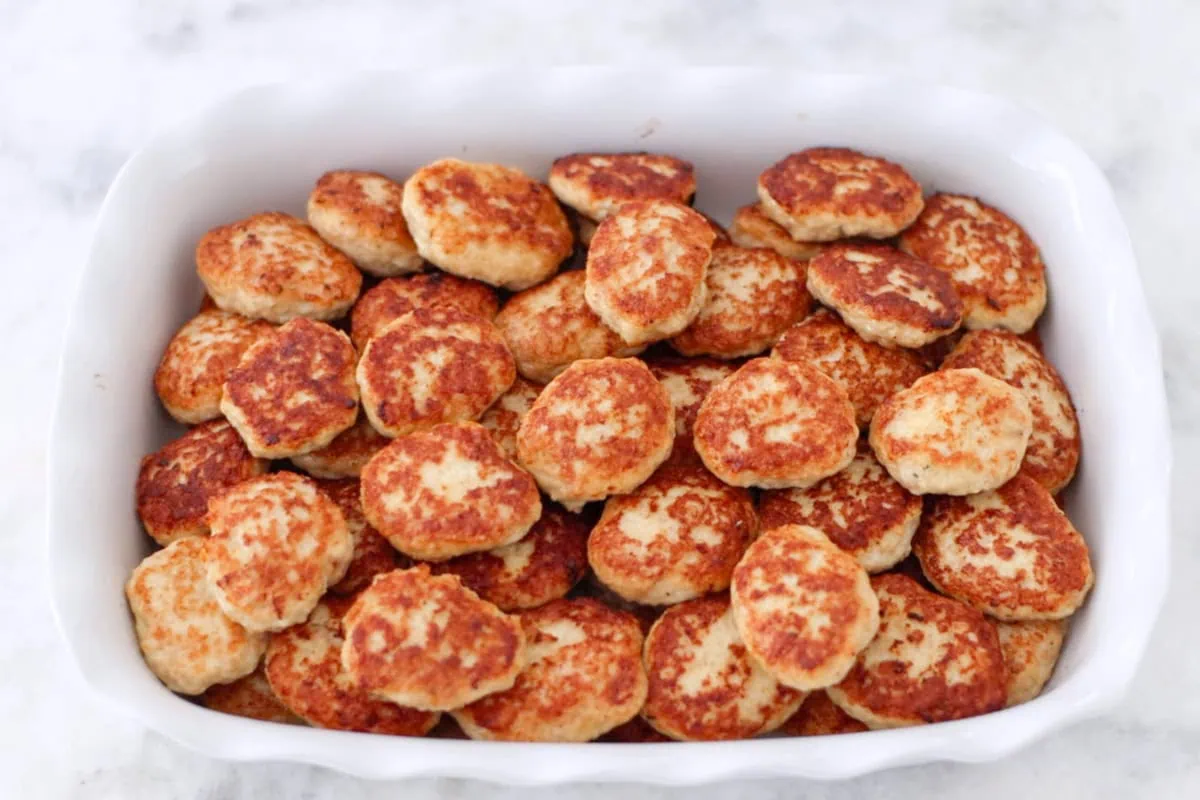
You have several options for meal prep:
- You can prepare the raw chicken mixture ahead of time and store it in the refrigerator for 1-2 days. When you're ready, just shape and cook the kotleti. If you want to prepare them even further in advance, the raw mixture can also be frozen for up to 3 months. Simply thaw it when you're ready to cook, then shape the kotleti and proceed with the recipe.
- Another option is to cook the kotleti ahead of time and store them in the refrigerator for up to 5 days. They reheat perfectly, so you’ll have a delicious meal ready to go.
- Finally, cooked Chicken Kotleti freeze wonderfully! Freeze them for up to 3 months. It's one of my favorite shortcut meals to have in my freezer.
How to Reheat:
If you have leftovers (lucky you!), the best way to reheat kotleti is in a pan. Add a small amount of water to the pan to create steam, cover, and heat on low heat until they're warmed through. They’ll stay juicy and delicious! You can also reheat them in the oven at 350°F. Just add a bit of water to the baking pan, cover, and heat until they’re warmed all the way through.
How to Freeze Chicken Kotleti
To freeze your Chicken Kotleti, store them in a freezer storage container or an airtight container. For added convenience, I like to freeze them individually first. Arrange the kotleti in a single layer on a baking sheet, cutting board, or large plate, and place them in the freezer just long enough for each one to freeze solid.
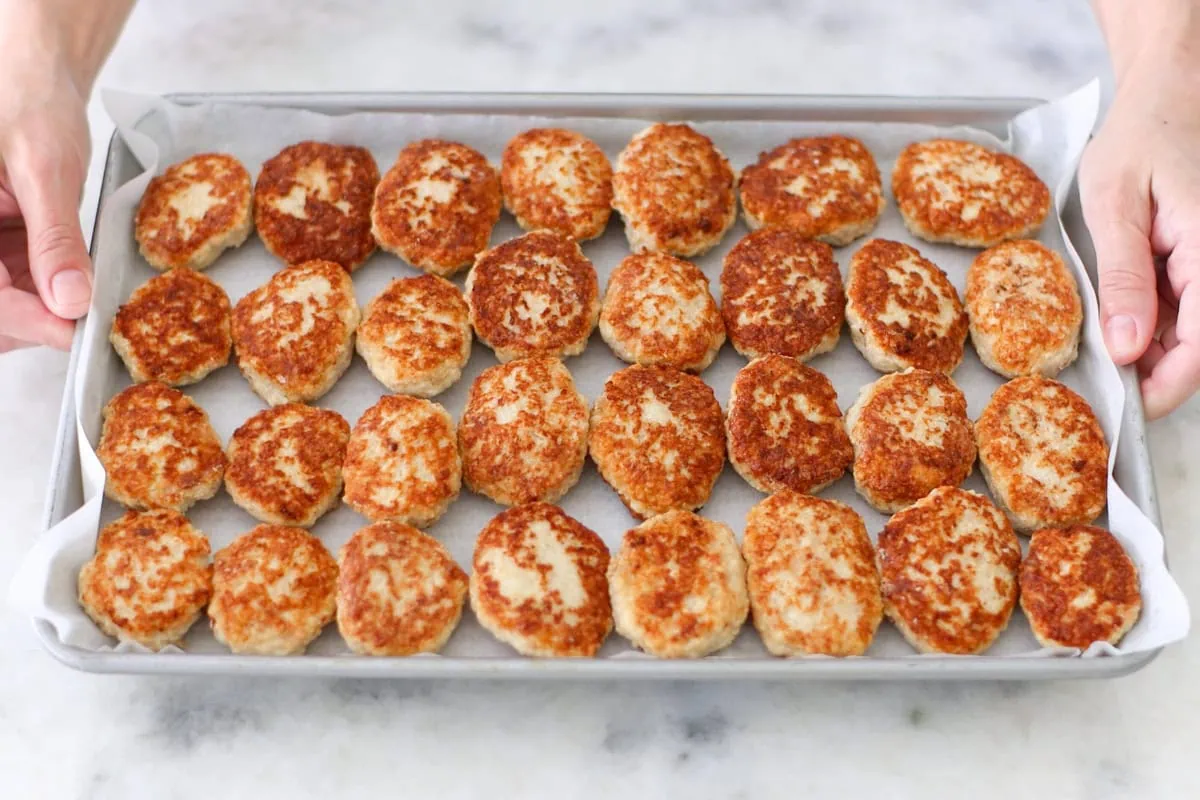
Once frozen, transfer them to a freezer ziplock bag. This method allows you to pull out just the number of kotleti you need, without thawing the entire batch, and they won’t freeze together.
This is a trick I use all the time when freezing Pelmeni, Blueberry Vareniki, and all sorts of meatballs, like these Honey Garlic Glazed meatballs.
Serving
Just like any meatball recipe, kotleti are one of the most versatile entrees and pair beautifully with just about anything. One of the most traditional sides to serve with kotleti are fluffy mashed potatoes, so check out how to make homemade mashed potatoes, Buckwheat Kasha with Mushrooms and pasta or rice. For salads, they are so good with Sour Cream Garden Salad, Garlic Dill Cucumbers or Cauliflower Tomato Salad.

Frequently Asked Questions
Absolutely! If you prefer turkey or beef or have it on hand, these other options are great substitute for chicken. The flavor and texture will be different, but they will also be super delicious. Feel free to experiment!
Yes, chicken kotleti freeze very well! Cook the chicken kotleti, then freeze in an airtight container or a freezer ziplock bag for up to 3 months.
While frying gives chicken kotleti that perfect golden crunch, baking them is a great option if you want a lighter, healthier version. Simply place the patties on a baking sheet, brush or spray with a little oil, and bake at 425°F for about 20-25 minutes, flipping halfway through. They will be pale in color and not crispy though.
If you tried this Cabbage Kotleti recipe or any other recipe on my blog, please leave a 🌟 star rating or a comment below. I love hearing from you!
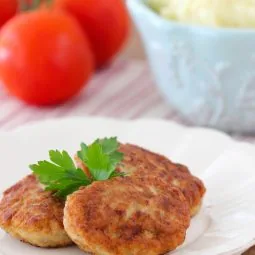
Chicken Kotleti
Ingredients
- 1 ½ lbs ground chicken
- ¾ cup panko bread crumbs or 2 slices of bread
- ⅓ cup milk
- 1 small onion or ½ of a large onion, grated
- 2 tablespoons sour cream
- 1 teaspoon salt
- ½ teaspoon pepper
- 1 egg
- 1 teaspoon dry herbs and spices such as garlic powder, dry parsley, chives, thyme, etc.
- oil for pan frying the kotleti (avocado oil, light olive oil, vegetable oil, etc.)
Instructions
- In a medium bowl, soak the panko breadcrumbs (or bread slices) in the milk and set aside for a few minutes. If using sliced bread, after soaking, puree the bread in a food processor or blender before adding it to the meat. Grate the onion using the small or medium holes of a box grater.
- Add the soaked breadcrumbs (or pureed bread), sour cream, egg, grated onion, salt, pepper, and dry herbs and spices to the ground chicken. Mix gently until well combined. The mixture will be very tender and softer than a typical meatball mixture.
- Dampen your hands with a little water and shape the mixture into oval patties, about 2 ½ inches in length. Work in small batches for easier handling.
- Heat oil in a skillet over medium heat. Add the patties to the skillet, making sure not to overcrowd the pan. Cook for about 5 minutes on the first side, until golden brown, then flip and cook for another 3 minutes on the second side. Cover the skillet to steam the kotleti and ensure they cook through.
- Wipe the skillet clean with a paper towel, add more oil, and repeat the cooking process for the remaining patties.
- Serve the kotleti hot or store leftovers in the refrigerator for up to 5 days or freeze up to 3 months.
Notes
- Clean the Pan After Each Batch: After each batch, wipe the skillet with a paper towel to remove any brown bits. If it gets really dirty, you may even want to wash it out. This ensures a clean surface for the next batch, preventing any leftover bits from burning or discoloring the kotleti and keeping them evenly golden brown.
- Freezing Tip: To freeze the kotleti, arrange them in a single layer on a baking sheet and freeze until solid. Then, transfer to a freezer ziplock bag. This way, you can remove just as many as you need without thawing the whole batch. They won’t freeze together!
- Reheating: Reheat kotleti in a pan by adding a little water to create steam, covering the pan, and heating on low. You can also reheat in the oven at 350°F—add a little water to the baking pan, cover, and heat until warmed through.
- Make Ahead: You can prepare the raw chicken mixture up to 1-2 days in advance and store it in the refrigerator, or freeze it for up to 3 months. If cooking ahead, store the cooked kotleti in the refrigerator for 5-7 days.

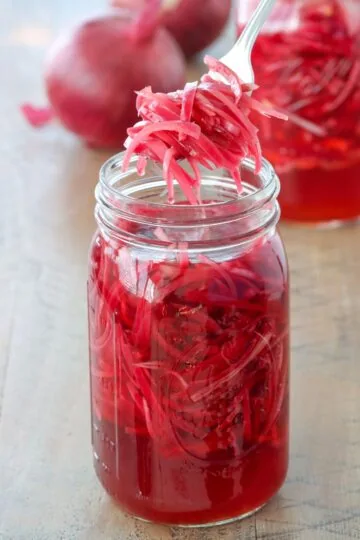
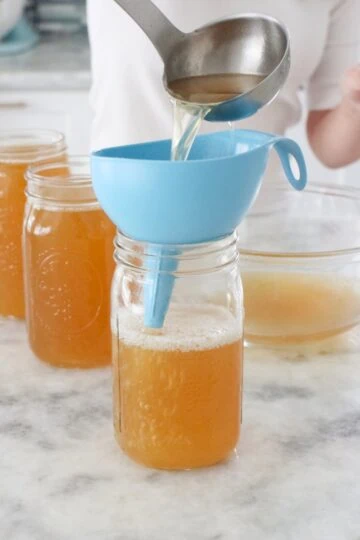
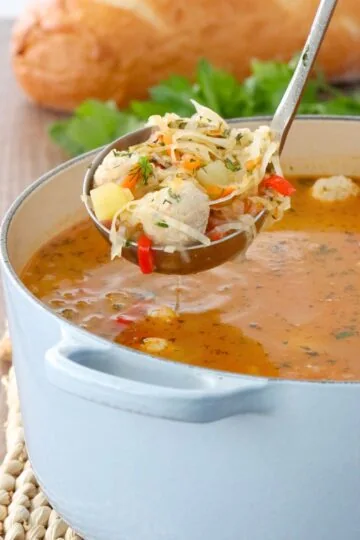
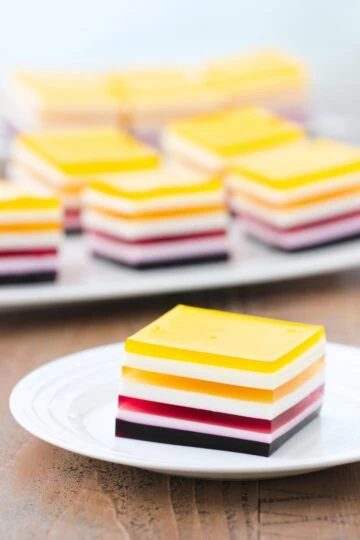
I made these last night. I used chicken thighs and I ground it myself with the attachment on my kitchen aid. They came out great! I only got 9 out of the batch, and I had leftover mushroom filling. I made rice pilaf and added the mushrooms to the pilaf. It was a delicious dinner and my husband loved it also. My 14 month old also loved it. Except for the filling. I just took the filling out of hers and she ate the whole thing. I will make plain ones for her next time. I like trying new things, so this was a great recipe.
You don't mention what dried herbs you use - this would be most helpful
Hi Olga, can you advise what dry herbs and quantities you used please? The recipe seems to be missing this bit. Thanks!
The dry herbs is a matter of taste preference and what you have on hand. I switch it up all the time. I suggest Trader Joe's Onion Salt and Simply Organic All Purpose seasoning, about a teaspoon or so. Everyone has different taste preferences and how much/how little they like at add.